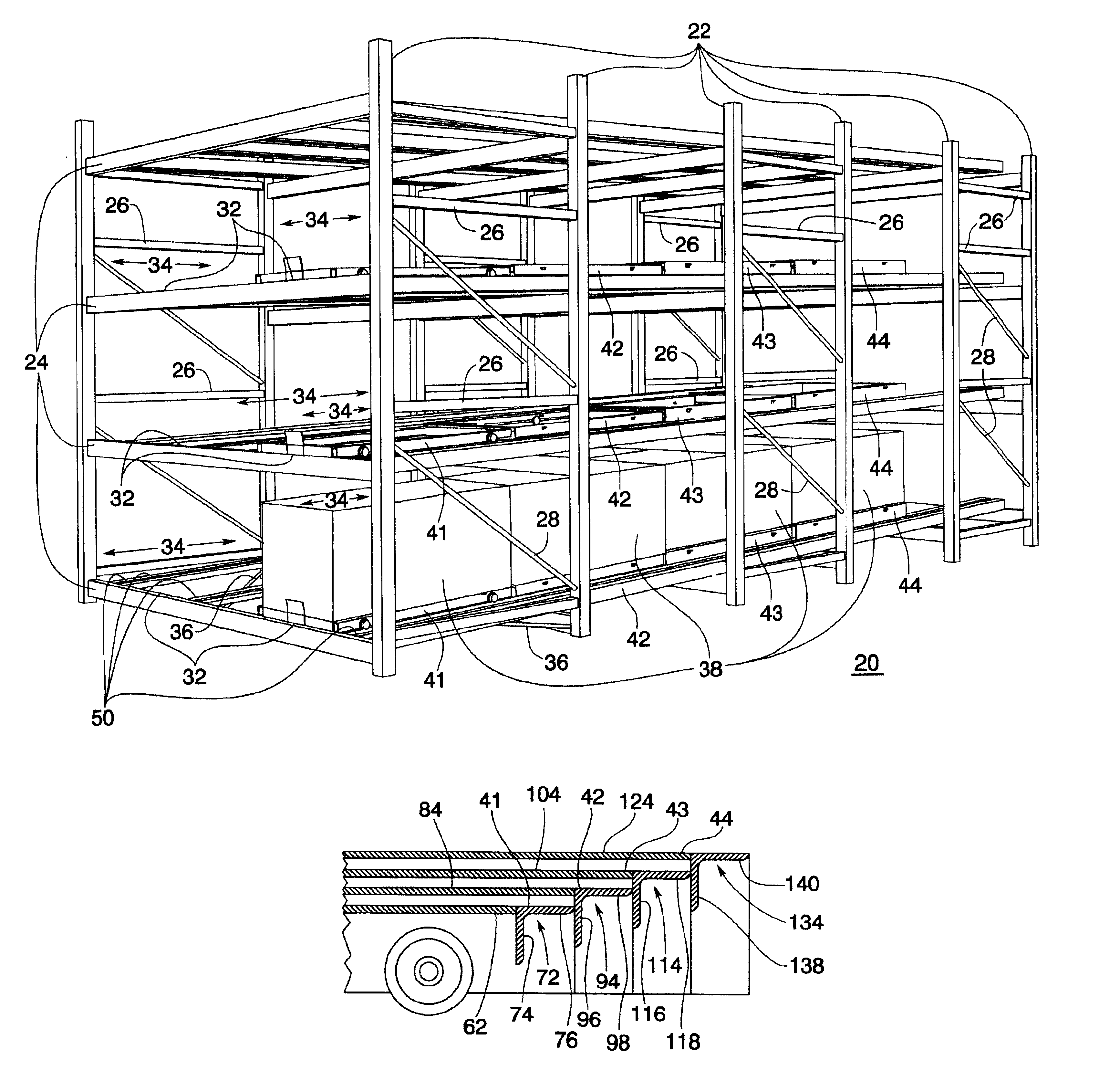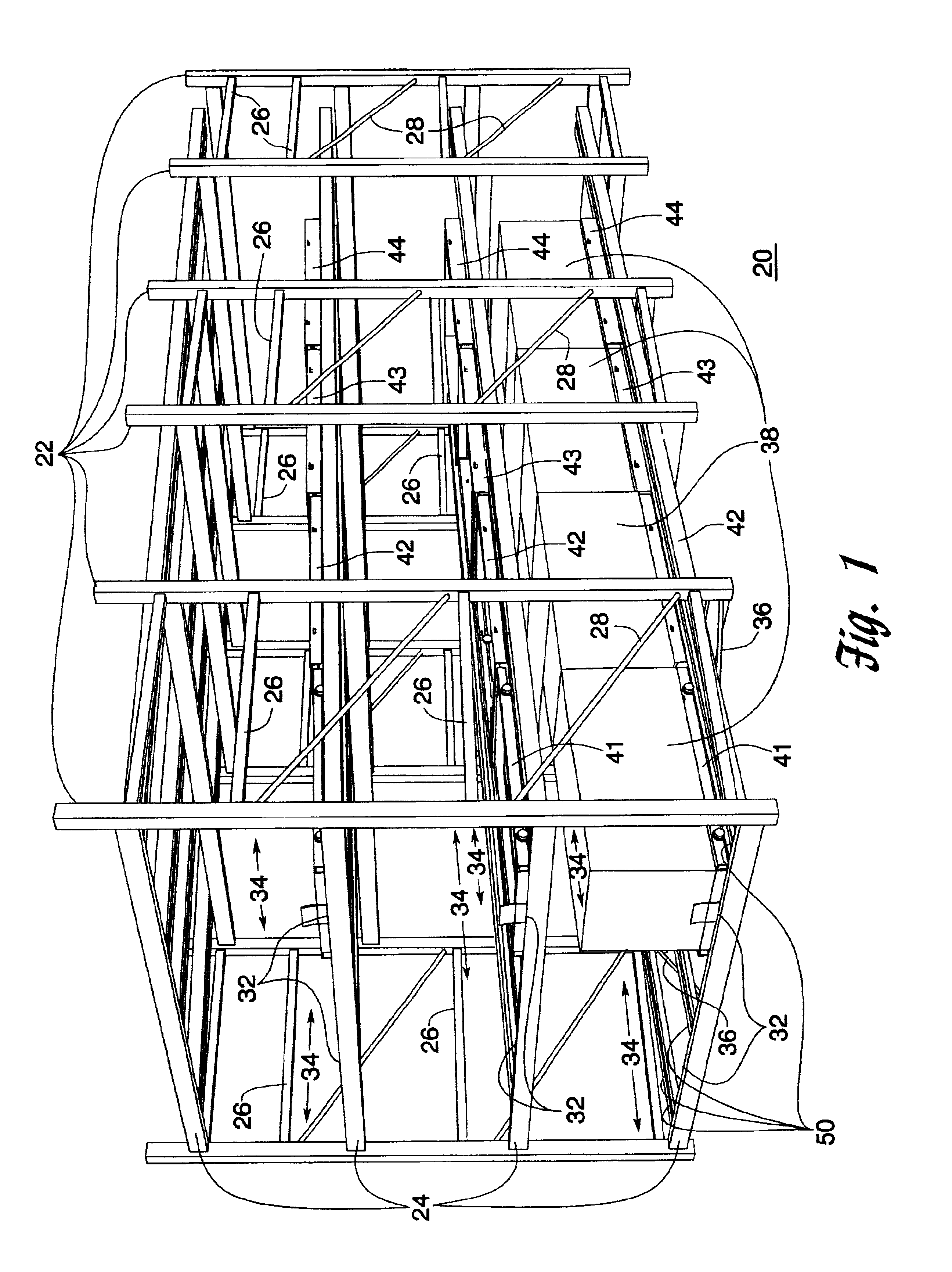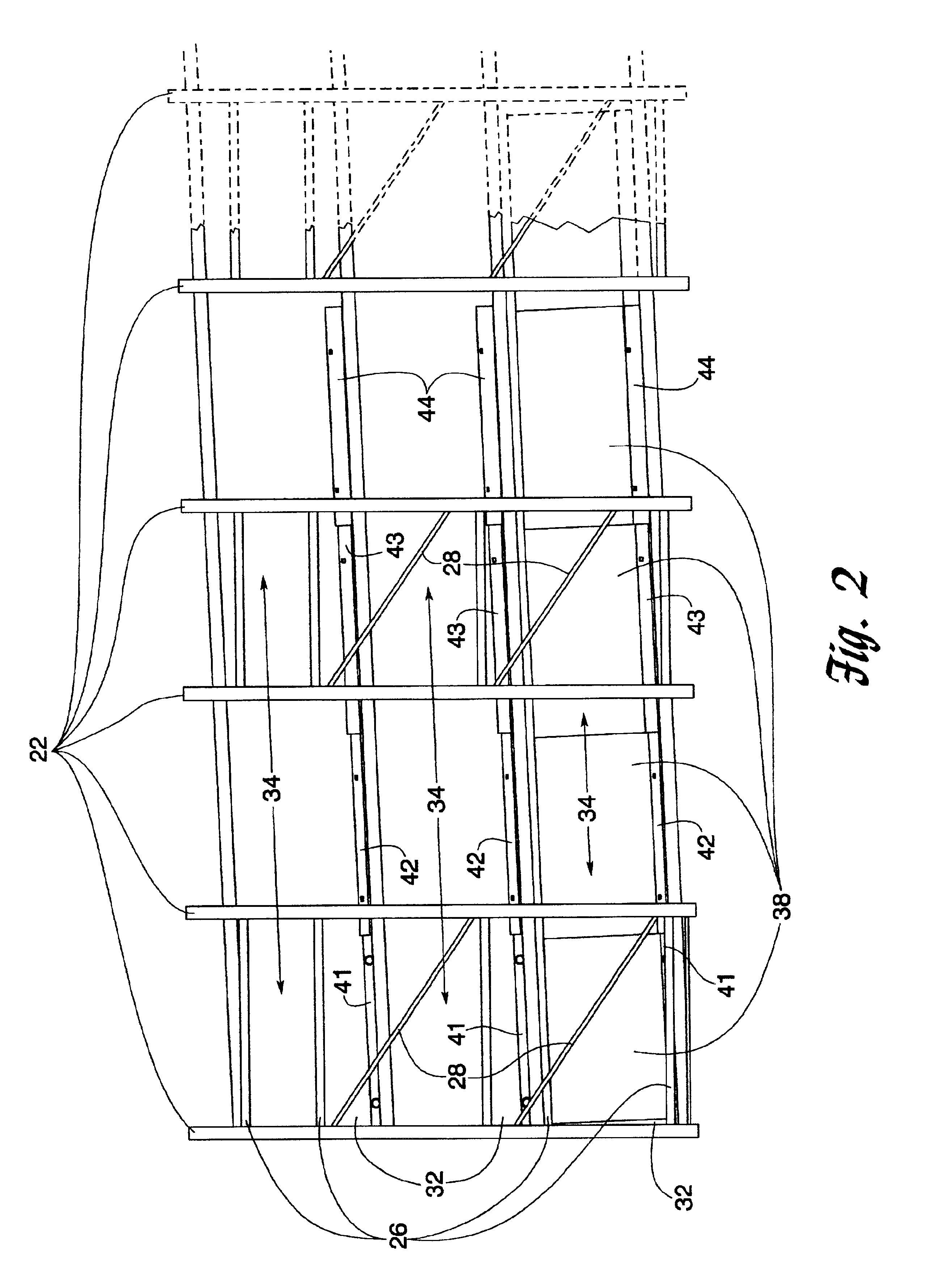Push back storage rack system
a storage rack and push-back technology, applied in the field of push-back storage rack systems, can solve the problems of reducing the load-bearing capabilities of the system, limiting the number of carts that can be used and thus the number of loads that can be stored in a single lane, and reducing the design of the cart, so as to reduce the bowing or warping effect, reduce the curling and excessive warping of the beam, and prevent the end of the pallet from dragging and subsequen
- Summary
- Abstract
- Description
- Claims
- Application Information
AI Technical Summary
Benefits of technology
Problems solved by technology
Method used
Image
Examples
Embodiment Construction
Referring to the drawings, identical reference numerals and letters designate the same or corresponding parts throughout the several figures shown in the drawings.
FIG. 1 shows a push back storage rack system of the type that is the subject matter of the invention. The system is based on a storage rack assembly 20 comprising a number of interconnected, vertical uprights 22 and horizontal beams 24. Side horizontals 26 and diagonal cross pieces 28 may also extend between the vertical uprights 22 to make up rack cells 30 along the depth of the rack system. Two separate cart lanes 34, each having a load end 32, are positioned along the lengths of the beams 24. To prevent the beams 24 from bowing outwardly and away from the rest of the system due to the stresses exerted on the beams 24 during operation, one or more diagonal tension bars 36 may also be positioned between about the center of one or more of the beams 24 and one or more vertical uprights 22 under the cart lanes 34. Alternativ...
PUM
 Login to View More
Login to View More Abstract
Description
Claims
Application Information
 Login to View More
Login to View More - R&D
- Intellectual Property
- Life Sciences
- Materials
- Tech Scout
- Unparalleled Data Quality
- Higher Quality Content
- 60% Fewer Hallucinations
Browse by: Latest US Patents, China's latest patents, Technical Efficacy Thesaurus, Application Domain, Technology Topic, Popular Technical Reports.
© 2025 PatSnap. All rights reserved.Legal|Privacy policy|Modern Slavery Act Transparency Statement|Sitemap|About US| Contact US: help@patsnap.com



